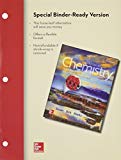
Concept explainers
(a)
Interpretation:
The balanced chemical equation for the given skeleton reaction.
(a)
Explanation of Solution
The skeleton equation for the chemical equation is shown in (1) where, on the left side, the number of atoms is not equal to the number of atoms on the right side.
To balance the chemical equation, the coefficient for
(b)
Interpretation:
The balanced chemical equation for the given skeleton reaction.
(b)
Explanation of Solution
The skeleton equation for the chemical equation is shown in (3) where, on the left side, the number of atoms is not equal to the number of atoms on the right side.
To balance the chemical equation, the coefficient for
(c)
Interpretation:
The balanced chemical equation for the given skeleton reaction.
(c)
Explanation of Solution
The skeleton equation for the chemical equation is shown in (5) where, on the left side, the number of atoms is not equal to the number of atoms on the right side.
To balance the chemical equation, the coefficient for
(d)
Interpretation:
The balanced chemical equation for the given skeleton reaction.
(d)
Explanation of Solution
The skeleton equation for the chemical equation is shown in (7) where, on the left side, the number of atoms is not equal to the number of atoms on the right side.
To balance the chemical equation, the coefficient for
Want to see more full solutions like this?
Chapter 5 Solutions
Combo: Loose Leaf for Introduction to Chemistry with Connect Access Card Chemistry with LearnSmart 1 Semester Access Card
- 4.104 When 2.750 g of the oxide Pb3O4 is heated to a high temperature, it decomposes to produce 0.0640 g of oxygen gas and 2.686 g of some new lead oxide compound. How can you use these data to determine the formula of the new compound?arrow_forwardIn a reaction, 1.2 g element A reacts with exactly 3.2 g oxygen to form an oxide, AOx; 2.4 g element A reacts with exactly 3.2 g oxygen to form a second oxide, AOy. (a) Determine the ratio x:y. (b) If x = 2, determine what the identity of element A might be.arrow_forwardGiven that the density of argon is 1.78 g/L under standard conditions of temperature and pressure, how many argon atoms are present in a room with dimensions 4.0 m 5.0 m 2.4 m that is filled with pure argon under these conditions of temperature and pressure?arrow_forward
- Silicon is produced for the chemical and electronics industries by the following reactions. Give the balanced equation for each reaction. a. SiO2(s)+C(s)arefurnaceElectricSi(s)+CO(g) b. Liquid silicon tetrachloride is reacted with very pure solid magnesium, producing solid silicon and solid magnesium chloride. c. Na2SiF6(s) + Na(s) Si(s) + NaF(s)arrow_forwardAzurite is a copper-containing mineral that often forms beautiful crystals. Its formula is Cu3(CO3)2(OH)2. Write balanced equation for the reaction of this mineral with hydrochloric acid.arrow_forward
 General, Organic, and Biological ChemistryChemistryISBN:9781285853918Author:H. Stephen StokerPublisher:Cengage Learning
General, Organic, and Biological ChemistryChemistryISBN:9781285853918Author:H. Stephen StokerPublisher:Cengage Learning Chemistry & Chemical ReactivityChemistryISBN:9781337399074Author:John C. Kotz, Paul M. Treichel, John Townsend, David TreichelPublisher:Cengage Learning
Chemistry & Chemical ReactivityChemistryISBN:9781337399074Author:John C. Kotz, Paul M. Treichel, John Townsend, David TreichelPublisher:Cengage Learning Chemistry & Chemical ReactivityChemistryISBN:9781133949640Author:John C. Kotz, Paul M. Treichel, John Townsend, David TreichelPublisher:Cengage Learning
Chemistry & Chemical ReactivityChemistryISBN:9781133949640Author:John C. Kotz, Paul M. Treichel, John Townsend, David TreichelPublisher:Cengage Learning Chemistry: The Molecular ScienceChemistryISBN:9781285199047Author:John W. Moore, Conrad L. StanitskiPublisher:Cengage Learning
Chemistry: The Molecular ScienceChemistryISBN:9781285199047Author:John W. Moore, Conrad L. StanitskiPublisher:Cengage Learning Chemistry: Principles and PracticeChemistryISBN:9780534420123Author:Daniel L. Reger, Scott R. Goode, David W. Ball, Edward MercerPublisher:Cengage Learning
Chemistry: Principles and PracticeChemistryISBN:9780534420123Author:Daniel L. Reger, Scott R. Goode, David W. Ball, Edward MercerPublisher:Cengage Learning Chemistry: An Atoms First ApproachChemistryISBN:9781305079243Author:Steven S. Zumdahl, Susan A. ZumdahlPublisher:Cengage Learning
Chemistry: An Atoms First ApproachChemistryISBN:9781305079243Author:Steven S. Zumdahl, Susan A. ZumdahlPublisher:Cengage Learning





